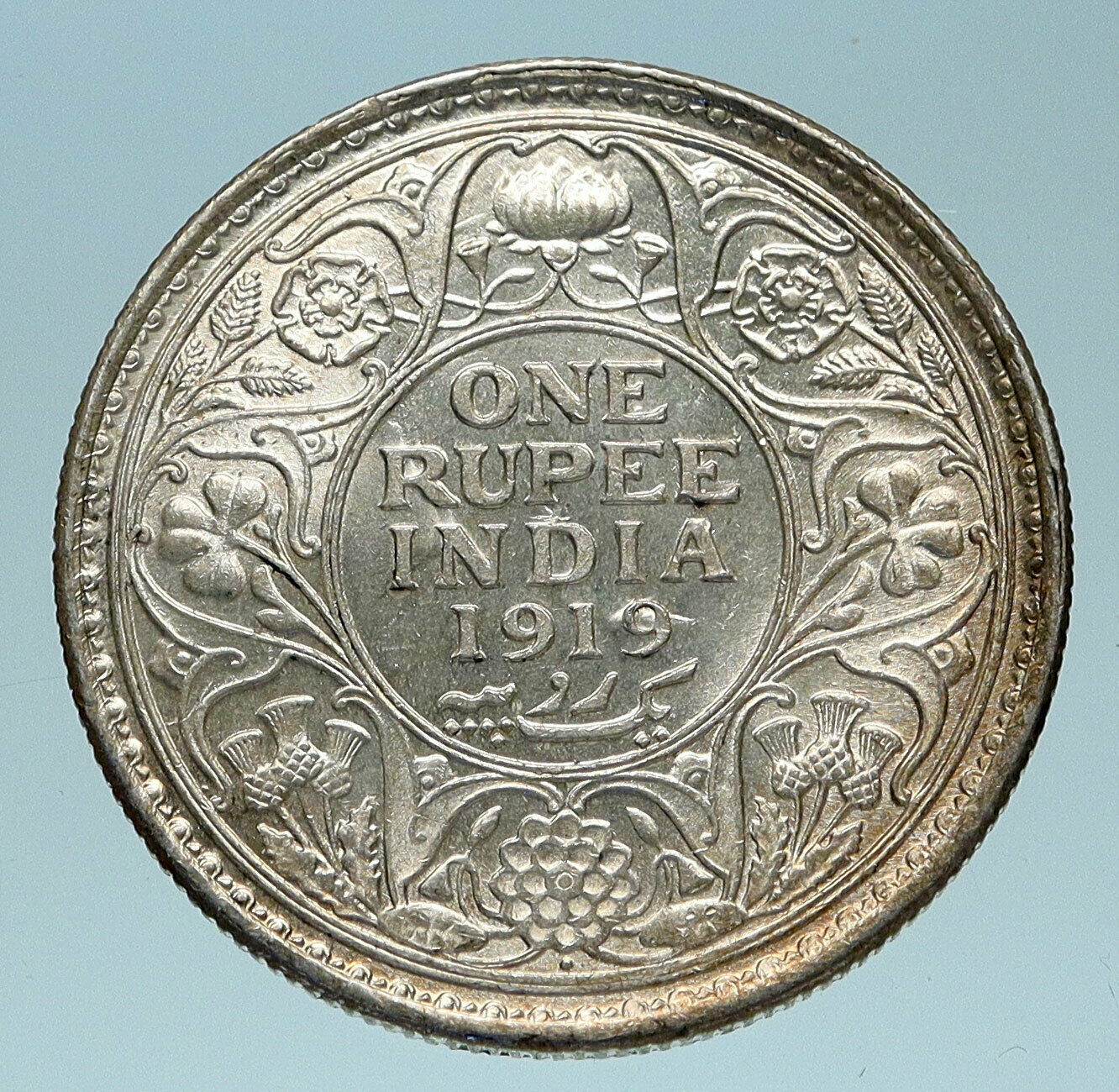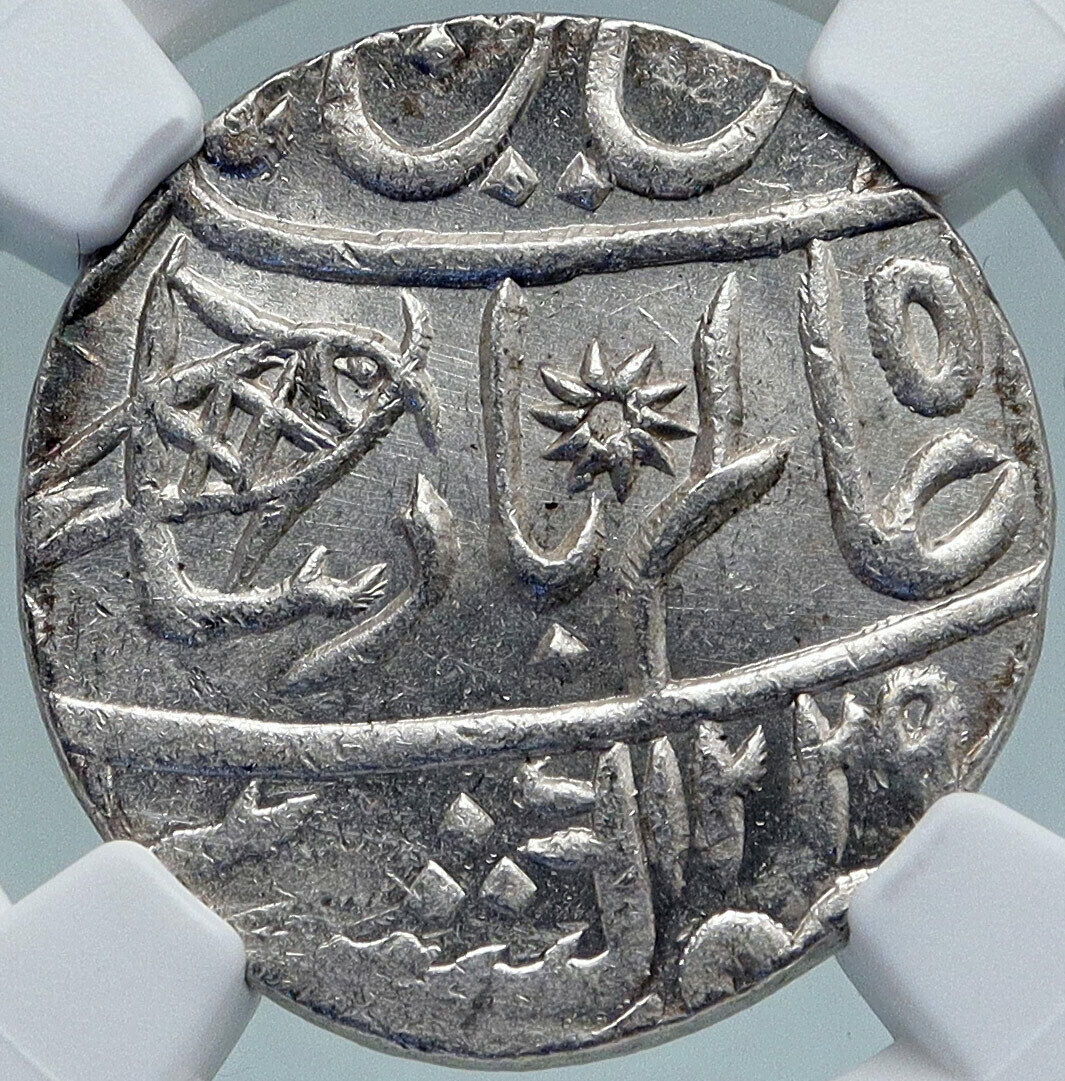|
India – Colonial British India – Edward VII, King of the United Kingdom and the British Dominions,
Emperor of India 22 January 1901 – 6 May 1910
1907 Silver Rupee 31mm (11.48 grams)
Reference: KM# 508
EDWARD VII KING EMPEROR, Bust of King Edward VII facing right.
ONE RUPEE INDIA. The value in English and Urdu – Yek rupiya (One rupee), date below. Spray of lotus flowers on each side and a crown above.
You are bidding on the exact item pictured, provided with a Certificate of Authenticity and Lifetime Guarantee of Authenticity.
Colonial India is the part of the Indian subcontinent which was under the control of European colonial powers, through trade and conquest. The first European power to arrive in India was the Macedonian army of Alexander the Great in 327-326 BC. The satraps he established in the north west of the subcontinent quickly crumbled after he left. Later, trade was carried between Indian states and the Roman Empire by Roman sailors who reached India via the Red Sea and Arabian Sea , but the Romans never sought trading settlements or territory in India. The spice trade between India and Europe was one of the main types of trade in the world economy and was the main catalyst for the period of European exploration. The search for the wealth and prosperity of India led to the accidental “discovery” of the Americas by Christopher Columbus in 1492. Only a few years later, near the end of the 15th century, Portuguese sailor Vasco da Gama became the first European to re-establish direct trade links with India since Roman times by being the first to arrive by circumnavigating Africa (1497-1499). Having arrived in Calicut , which by then was one of the major trading ports of the eastern world, he obtained permission to trade in the city from Saamoothiri Rajah .
Trading rivalries brought other European powers to India. The Netherlands , England , France, and Denmark established trading posts in India in the early 17th century. As the Mughal Empire disintegrated in the early 18th century and then the Maratha Empire became weakened after the third battle of Panipat , the relatively weak and unstable Indian states which emerged were increasingly open to manipulation by the Europeans through dependent “friendly” Indian rulers.
In the later 18th century Britain and France struggled for dominance through proxy Indian rulers and also by direct military intervention. The defeat of the redoubtable Indian ruler Tipu Sultan in 1799 marginalised French influence. This was followed by a rapid expansion of British power through the greater part of the subcontinent in the early 19th century. By the middle of the century, the British had already gained direct or indirect control over almost all of India. British India contained the most populous and valuable provinces of the British Empire and thus became known as “the jewel in the British crown”.
East India Company
In 1757 Mir Jafar , the commander in chief of the army of the Nawab of Bengal , along with Jagat Seth , Maharaja Krishna Nath , Umi Chand and some others, secretly connived with the British, asking support to overthrow the Nawab in return for trade grants. The British forces, whose sole duty until then was guarding Company property, were numerically inferior to the Bengali armed forces. At the Battle of Plassey on 23 June 1757, fought between the British under the command of Robert Clive and the Nawab, Mir Jafar’s forces betrayed the Nawab and helped defeat him. Jafar was installed on the throne as a British subservient ruler. The battle transformed British perspective as they realised their strength and potential to conquer smaller Indian kingdoms and marked the beginning of the imperial or colonial era in the subcontinent.
British policy in Asia during the 19th century was chiefly concerned with expanding and protecting its hold on India, viewed as its most important colony and the key to the rest of Asia.[9] The East India Company drove the expansion of the British Empire in Asia. The company’s army had first joined forces with the Royal Navy during the Seven Years’ War , and the two continued to cooperate in arenas outside India: the eviction of Napoleon from Egypt (1799), the capture of Java from the Netherlands (1811), the acquisition of Singapore (1819) and Malacca (1824), and the defeat of Burma (1826).
From its base in India, the company had also been engaged in an increasingly profitable opium export trade to China since the 1730s. This trade, unlawful in China since it was outlawed by the Qing dynasty in 1729, helped reverse the trade imbalances resulting from the British imports of tea, which saw large outflows of silver from Britain to China. In 1839, the confiscation by the Chinese authorities at Canton of 20,000 chests of opium led Britain to attack China in the First Opium War , and the seizure by Britain of the island of Hong Kong, at that time a minor settlement.
The British had direct or indirect control over all of present-day India before the middle of the 19th century. In 1857, a local rebellion by an army of sepoys escalated into the Rebellion of 1857 , which took six months to suppress with heavy loss of life on both sides. The trigger for the Rebellion has been a subject of controversy. The resistance, although short-lived, was triggered by British East India Company attempts to expand its control of India. According to Olson, several reasons may have triggered the Rebellion. For example, Olson concludes that the East India Company’s attempt to annexe and expand its direct control of India, by arbitrary laws such as Doctrine of Lapse, combined with employment discrimination against Indians, contributed to the 1857 Rebellion. The East India Company officers lived like princes, the company finances were in shambles, and the company’s effectiveness in India was examined by the British crown after 1858. As a result, the East India Company lost its powers of government and British India formally came under direct British rule , with an appointed Governor-General of India . The East India Company was dissolved the following year in 1858. A few years later, Queen Victoria took the title of Empress of India.
India suffered a series of serious crop failures in the late 19th century, leading to widespread famines in which at least 10 million people died. The East India Company had failed to implement any coordinated policy to deal with the famines during its period of rule. This changed during the Raj , in which commissions were set up after each famine to investigate the causes and implement new policies, which took until the early 1900s to have an effect.
The slow but momentous reform movement developed gradually into the Indian Independence Movement . During the years of World War I , the hitherto bourgeois “home-rule” movement was transformed into a popular mass movement by Mahatma Gandhi , a pacifist . Apart from Gandhi, other revolutionaries such as Shaheed Bhagat Singh , Chandrashekar Azad , Subhas Chandra Bose ,and Pradyumn Ananth Pendyala were not against use of violence to oppose the British rule. The independence movement attained its objective with the independence of Pakistan and India on 14 and 15 August 1947 respectively.
Conservative elements in England consider the independence of India to be the moment that the British Empire ceased to be a world power, following Curzon ‘s dictum that, “[w]hile we hold on to India, we are a first-rate power. If we lose India, we will decline to a third-rate power.”
 Edward VII (Albert Edward; 9 November 1841 – 6 May 1910) was King of the United Kingdom and the British Dominions and Emperor of India from 22 January 1901 until his death. Edward VII (Albert Edward; 9 November 1841 – 6 May 1910) was King of the United Kingdom and the British Dominions and Emperor of India from 22 January 1901 until his death.
The eldest son of Queen Victoria and Prince Albert of Saxe-Coburg and Gotha , Edward was related to royalty throughout Europe. Before his accession to the throne, he served as heir apparent and held the title of Prince of Wales for longer than any of his predecessors. During the long reign of his mother, he was largely excluded from political power and came to personify the fashionable, leisured elite. He travelled throughout Britain performing ceremonial public duties and represented Britain on visits abroad. His tours of North America in 1860 and the Indian subcontinent in 1875 were popular successes, but his reputation as a playboy prince soured his relationship with his mother.
As king, Edward played a role in the modernisation of the British Home Fleet and the reorganisation of the British Army after the Second Boer War . He re-instituted traditional ceremonies as public displays and broadened the range of people with whom royalty socialised. He fostered good relations between Britain and other European countries, especially France , for which he was popularly called “Peacemaker”, but his relationship with his nephew, Kaiser Wilhelm II , was poor. The Edwardian era , which covered Edward’s reign and was named after him, coincided with the start of a new century and heralded significant changes in technology and society, including steam turbine propulsion and the rise of socialism . He died in 1910 in the midst of a constitutional crisis that was resolved the following year by the Parliament Act 1911 , which restricted the power of the unelected House of Lords .
|





 Edward VII (Albert Edward; 9 November 1841 – 6 May 1910) was King of the United Kingdom and the British Dominions and Emperor of India from 22 January 1901 until his death.
Edward VII (Albert Edward; 9 November 1841 – 6 May 1910) was King of the United Kingdom and the British Dominions and Emperor of India from 22 January 1901 until his death.




